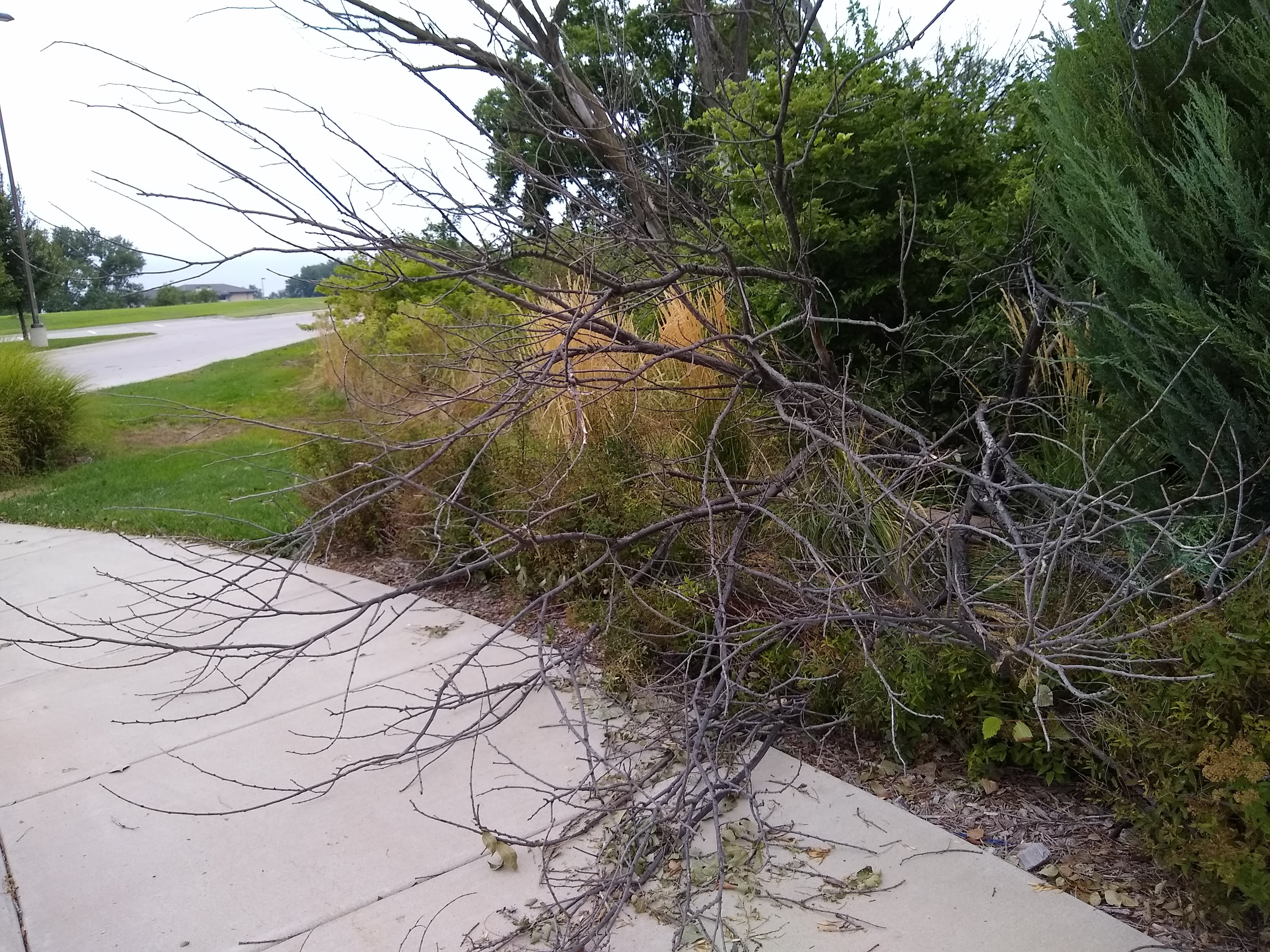BY CORIE LYNN
As Fort Hays State staff and new students readied themselves for the start of the semester, the city of Hays braced itself against the thunderstorms that moved across the state.
“Across the region, storms like last night are quite common,” said Dr. P. Grady Dixon, the Interim Dean of the FHSU Werth College of Science, Technology, and Mathematics. “I have hundreds of photos from across the Great Plains of shelf clouds that look very similar to [Tuesday] night.”
The storms that swept through Hays the night of August 13, however, did have some peculiarities.
According to Dr. Dixon, experiencing wind speeds over seventy miles per hour or more than three inches of rain isn’t uncommon for the Hays area. To have both is a rarity.
“Tuesday night was the first in the last 30 years to have both 70+ mph winds and 3”+ of rainfall at the same time,” he said.
This unusual event led to damage across the city of Hays. This included downed trees, flooded streets, and the roof of Celebration Community Church being ripped from the building.
Despite the damage on campus and off, the first of FHSU’s new students began moving in the following morning. They weren’t surprised by the extreme weather of the previous night.
“Back home we had similar weather Saturday or Sunday, I think,” said Brady, a Kansas Academy of Mathematics and Science student.
Hunter, a Freshman from Oakley, Kansas, had also experienced similarly severe storms. The storm that hit Hays Tuesday evening also swept through his hometown, though it did not see the same level of damage and flooding.
“[I] don’t think Oakley got hit as bad,” he said. “Hays is much worse than Oakley was.”
Unfortunately, Hays residents are familiar with flooding and damage it can cause.
“Lincoln Draw, Oak Street, and other parts of town can flood quickly and briefly with less than 1” of rain if it falls quickly enough,” said Dr. Dixon. “Thankfully, the city has recently installed ‘Turn Around, Don’t Drown’ signs in the most flood-vulnerable areas.”
He later elaborated that even those who do not live in the flood-prone parts of town, including those on the FHSU campus, need to be wary of flooded areas. It is especially important not to drive down a flooded road.
“Flooding often scours away pavement and dirt, so a seemingly shallow stream running down the street could be hiding a hole large enough to swallow your vehicle,” Dr. Dixon said.
He also recommended that students pay attention to weather conditions, especially to the warnings issued for their area.
“Severe Thunderstorm warnings are serious even if no Tornado Warning is issued. Likewise, in Hays, Flash Flood Warnings have real consequences,” said Dr. Dixon. “Plan to be in a safe building before the storms arrive. Have plans to deal with a loss of power. Have your phone charged in advance. Be patient with the city and university as they work to restore order.”
It is important for students to take safety measures such as these whether they familiar with severe storms or not. At home or on campus, they will then be prepared for the next storm that rolls through Hays.

